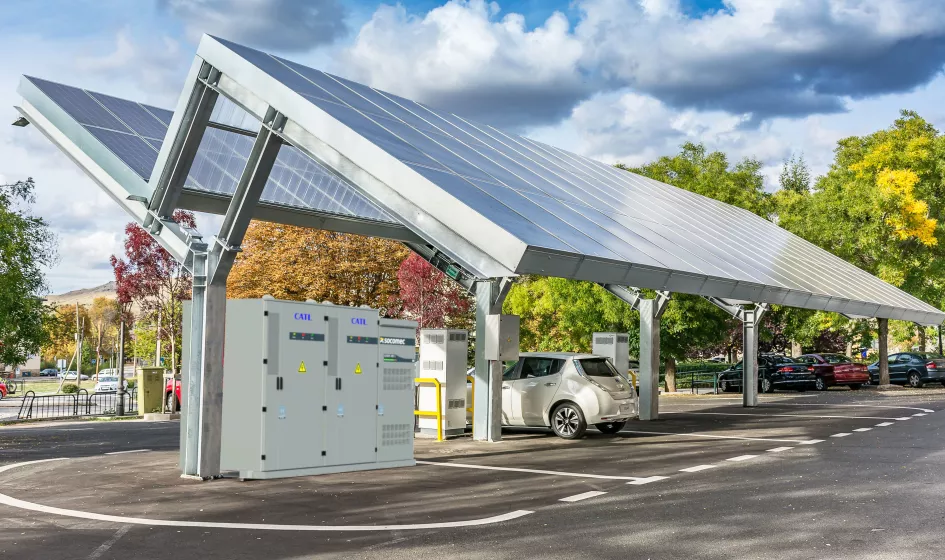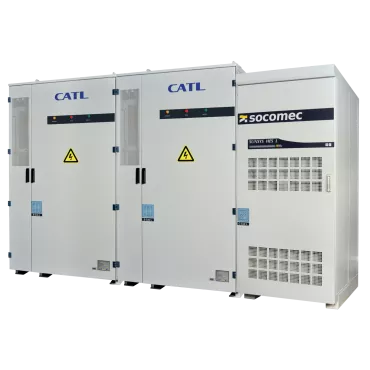The ban on sales of combustion engine vehicles in most European countries, Canada and some US states by 2035 is a first step towards decarbonising road traffic. According to an estimate by the IEA, 350 million electric vehicles will be on the road by 2030 to reach the "NET Zero Emissions" target by 2050, which will represent more than 60% of vehicles sold globally. To support this increase, it is estimated that over 60 million charging points will be installed by 2030.
Given the speed of growth and the development of fast and ultra-fast charging stations, however, the energy requirements for charging EVs are increasing faster than the energy available on the grid.
Influx of demand consequences
The influx of demand could then affect the performance of EV charging infrastructure with the following consequences:
1. A reduction in load power at times of high demand and, therefore, a slower load, which results in potential losses of profitability for the operator.
2. Imposed restrictions on the number of loads during peak hours - In some cities or countries, new rules are put in place. In California, for example, during major summer heat waves, energy providers require citizens to reduce their electric car loads between certain peak hours. This is also the case in Switzerland. These measures prevent EV charging, and therefore travel, even in emergency situations.
3. A mechanical increase in tariffs - When the demand for charging is higher than the supply, the tariff increases. The operator therefore has two solutions: either he loses margin, or he increases his charging rates at the risk of seeing his clientele leave for competitors who are able to absorb these decreases in profitability.
4. Power cuts - The risk has already been pointed out in Europe by the International Energy Agency (IEA). It goes without saying that this imposed load shedding compromises the continuity of supply to the recharging infrastructures.
Maintaining equal level of service, whatever the network saturation state
Energy storage systems are designed and adapted to overcome these constraints - and all the more so when they are combined with local renewable energy production. They are, therefore, a real solution for optimising charging points and their proper operation. They can indeed:
Maintain charging speed - even during peak hours
When the grid is not able to provide the energy required to operate the charging stations at nominal power, especially during peak hours, energy storage systems can provide additional power to the grid. In this way, the operating power of the charging stations can be maximised, allowing for the shortest possible charges.
This avoids the high costs and long waits associated with upgrading the grid, while ensuring a more stable load to satisfy customers.
Lower installation and operating costs
The addition of many charging points or simply a fast charging point may require an upgrade of the infrastructure (e.g. change of the medium voltage transformer), the energy storage system can be an excellent alternative to limit investments and accelerate the deployment of charging points.
In addition, for consumers who regularly have energy needs that exceed their subscription, storage, charged during off-peak hours, allows consumption to be smoothed (peak shaving).
Ensure continuity of service in the event of loss of the main grid
Because of its ability to function as a voltage generator, the energy storage system is able to re-supply certain loads, such as a microgrid, when the main grid is down. Depending on the sizing of the system, this may be sufficient to allow continuity of supply until the grid returns.
Contribute to a virtuous commitment to the environment
Electric vehicles and photovoltaic (PV) panels are real catalysts for the energy transition and their integration makes the sites where they are installed more virtuous and therefore more attractive. This is why more and more charging stations are combined with photovoltaic installations.
A step further: generating additional revenue
Finally, in some cases, energy storage systems can even be aggregated by an aggregator to provide additional revenue through network services





